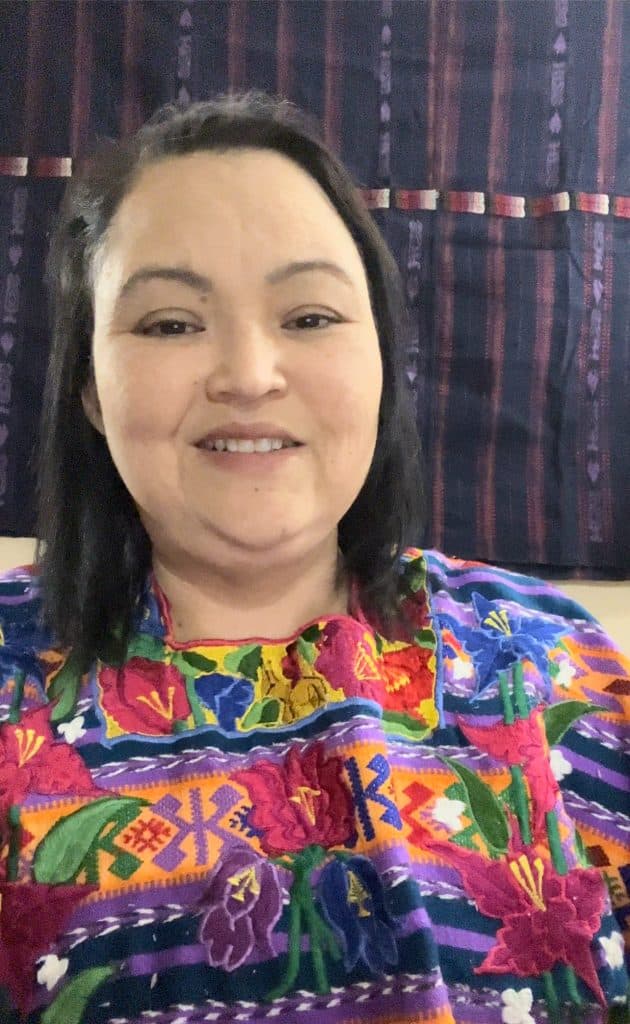Have you signed up for The Educator’s Room Daily Newsletter? Click here and support independent journalism!
As a young girl, newly immigrated from Guatemala, I wondered whether my new teachers and classmates saw the real me -an individual with diverse thoughts, ideas, language, and culture. I felt alone and scared as I tried to overcome the fear of a new place, new culture, and new beginnings. Each day I longed to return home to my ‘safe place’ with my brothers and my parents.
Now a classroom teacher, I am part of a community of students and families from many different cultures. I am not alone. Southern Nevada is a diverse and multicultural community. I teach seven classes with 98 students,13 of whom have recently immigrated from other countries. Among my students, I have Pablo from Cuba, whose family is seeking safety from gun violence; Israel from Ecuador, who lost his parents in a car accident and has transitioned into the United States, adopted by his uncle and aunt; and Miguel from Guatemala, whose family was seeking reprieved from unsafe living conditions and neighborhood drugs.
I know from my own experience that it’s easy for students to feel ‘forgotten or overlooked.’ I remember teachers giving me worksheets and sitting me in a corner of the room while they taught the rest of the class. Now, some teachers log our newcomer students onto Chromebooks and ask them to work online independently, often without engaging with them or supervising them. We must engage our students differently than we have before.
I recall another teacher explaining to me that math was easy to learn and that I should process it rather quickly because even though I didn’t speak English, math was the same whether it was in Spanish, French, or English. I smiled and tried to comprehend his idea, but in reality, I had a hard time understanding the new styles of math that were introduced to me as a Spanish speaker. When it came time to do word problems in math, I struggled.
As my husband explained in a recent conversation, math is not a “universal language.” When students arrive from new places, as I did, they are in a place where we speak English. Their focus is often learning a new language and not just understanding that 1+1 is 2. To help these students succeed, we have to embrace their mother language.
Through Mother Language Day, we can celebrate that idea and commit to incorporating the mother language of our students into our teaching platforms. If we enfold the students’ mother tongue into our teaching, we create a bridge that connects their knowledge in their own language to English. This allows students to not just “learn” to speak English but really comprehend the ideas and standards on any given subject, why they are learning what they are being presented, and how it connects to their long-term educational journey.
Years ago, when I started working as a support staff, our elementary school had dual language kindergarten. I recall the students feeling safe and understood as they were taught within this learning structure. It lasted one year, and then they did away with it. According to a recent article in the Las Vegas Review-Journal, our district has revisited this idea, and I am honored to be a part of it. We will support our students in an environment where they feel comfortable and safe and begin to connect their mother tongue to the English language. This year for Mother Language Day on February 21st, UNESCO honors their new theme; “Multilingual education – a necessity to transform education.” Let us all support the cause and transform the general idea that subject matters should rather easily connect.
We must value and incorporate their cultures, traditions, and families as part of our classrooms. Independently and through the support of the district, here are some ways I ensure success for the diverse community of multilingual students and families in my classroom:
Acknowledge and respect cultural and linguistic differences.
Acknowledging individual differences, as well as building relationships with our students, can make a significant difference in their success in our classrooms. I prioritize connecting with all of my students. I acknowledge and appreciate the cultural and linguistic differences and assets they bring with them to our class community. One of the ways I do this is by encouraging them to maintain their native language as they work to acquire English.
My classwork is translated for the students in their mother language. In my class at this time, that is Spanish. There are many translation applications available, which I have added to my Canvas portals as well as Google translate. I have also used Duolingo to assist my students in learning English. The application and the assignments were so successful that a parent asked if he could join as well. To further assist families, I have translated manuals, held classes on computer literacy with the support of Vegas PBS, and translated flyers and materials that were sent home.
Support the cultural and linguistic diversity of students and families.
I honor my students’ individuality and welcome their families as part of our school community. Culture and language are significant parts of our identities and the identities of my students. I engage my families in the education of their students by extending support in and out of the classroom, leveraging the cultural and linguistic diversity of each student represented in my classroom. I invite families to events after school hours and have one on one sessions. We discuss what goes on inside my classroom but also district resources for students’ success and district policies.
Most recently, as the athletic director, I held sessions to explain our district sports process. Although the district website offers families an option to select their mother language, some families still struggle to navigate the content. Offering in-person events where information was provided in Spanish was a way to help families overcome a barrier to their children’s participation in sports.
I also use an application called Remind that allows me to communicate with my families in their preferred language. I write in English, and they get their message on their phone in their selected language and vice versa. Though this application or through newsletters sent home, we offer connections to district family engagement centers, which facilitate the connections and support between our students, families, and community. The center focuses on the four I’s and provides guidance on “inclusive, individualized, integrated, and impactful” family engagement. We support and focus on that mission.
Partake in meaningful professional learning and use resources that are available.
I acknowledge the challenges that persist in my classroom and in my district. I stay connected with what is new and what may support my students within the school setting as well as at home. I learn ways to elevate the knowledge of families pertaining to their students’ education. Through our partnership with the University of Nevada Las Vegas and their center of multicultural education, I am able to expand my knowledge. I have been able to connect with professional development speakers as well as take part in presentations that have given me additional resources and certification in trainings. As educators, we must work together to support our students and families. We need professional learning and development to know how to meet the needs of our diverse students. It is essential that we build strong foundational knowledge of multicultural education and provide educators with the tools available to accommodate culturally and linguistically diverse students and their families.
Being an educator gave me the opportunity to become a mirror and a reflection for students like me – students who are culturally and linguistically gifted, students who deserve to be seen as they are, for who they are. As we celebrate International Mother Language Day this year, let’s remember that every student deserves to be seen and heard and to belong to a community that values them and their families no matter the language they speak.

Karen Villatoro Gonzalez is a 2022-23 Teach Plus Policy Fellow. Karen is currently in her third year of teaching with the Clark County School district. Karen is currently a Medical Magnet educator and has taught English and ELL learners.

Editor’s Note: If you enjoyed this article, please become a Patreon supporter by clicking here.





